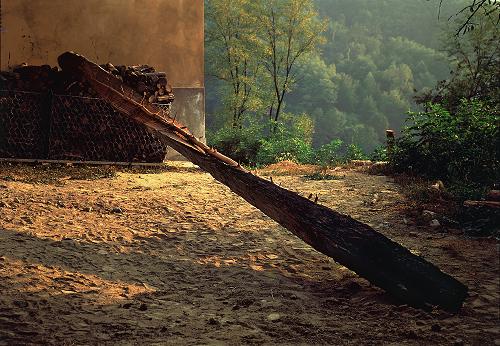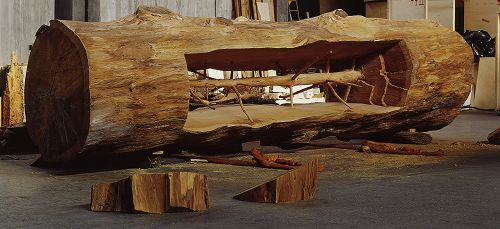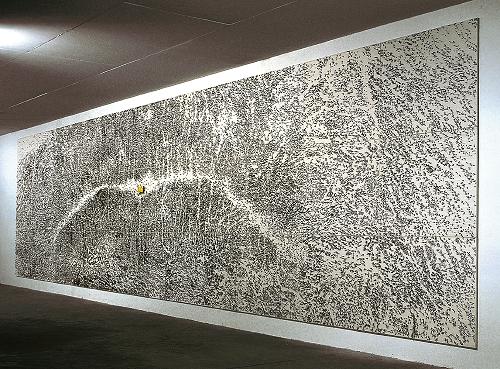Empathic
vision
of the visible
world
He works
through
our senses
Allegory
of our own
cycle
of life
|
Giuseppe Penone reconcilates Arte Povera and Land Art, in a memorable apprehension of the inner nature of things. The excellent retrospective held at the Beaubourg Museum in Paris from June thru August 2004, showed the works done in the last 20 years.
Penone has a paradoxal and empathic vision of the visible world, and leads us to a subtle discovery of its content and invisible parts, as he depicts and analyses it with most insight. He does not try to show pleasing or beautiful works, but his elegant and esthetic touch reveals the inner beauty of our environment.
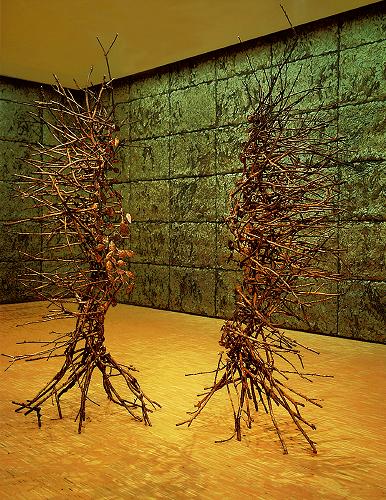
Giuseppe Penone, Peau de feuilles [Pelle di foglie], 2000
et Respirer l'ombre [Respirare l'ombra], 1999
cages métalliques, feuilles de laurier, bronze 330 x 180 x 130 cm
module de Respirer l'ombre : 78 x 117 x 7 cm
Collection Centre Pompidou-Musée national d'art moderne, Paris
Vue de l'installation au Centre Pompidou, distribution RMN
Photo : Philippe Migeat, 2000 © Adagp, 2004
Through both his analytical and sensorial approach, he takes us to another vision of our physical world, and emphasizes the existing link between human being and mother nature.
He contributes with subtelty to develop our own empathy and vision, as he works through our senses rather than through our mind. As a poet he names his works with titles that sound like evocations, scents or images, and these very titles are an echo of his creations.
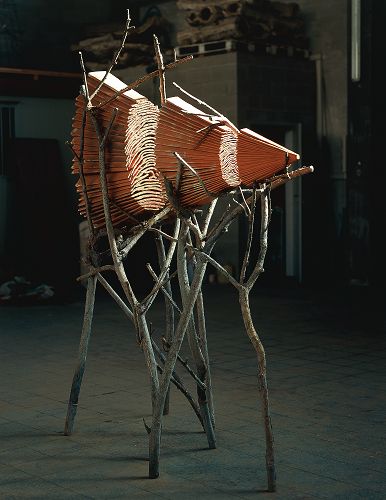
Giuseppe Penone, Ombre de terre [Ombra di terra], 2000-2003
Terre cuite, bronze, 230 x 180 x 80 cm, coll. particulière
Photographie de Giuseppe Penone et Dina Carrara © Adagp, 2004
His awareness of time, which can be easily perceived in his work-process is very important, and the way he decrypts the cycle of the tree, and generally speaking of Nature, is an allegory of our own cycle of life. Humility comes out of it, and the all-mighty person who hides in each of us tends to withdraw in this adventure and get reconnected with its environment.
His approach to art and life reminds me of Anya Gallaccio’s ongoing fascination with time by making visible the inevitable process of natural decay and eventual disappearance.
Edith Lassiat
Paris, november 2004
|
